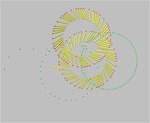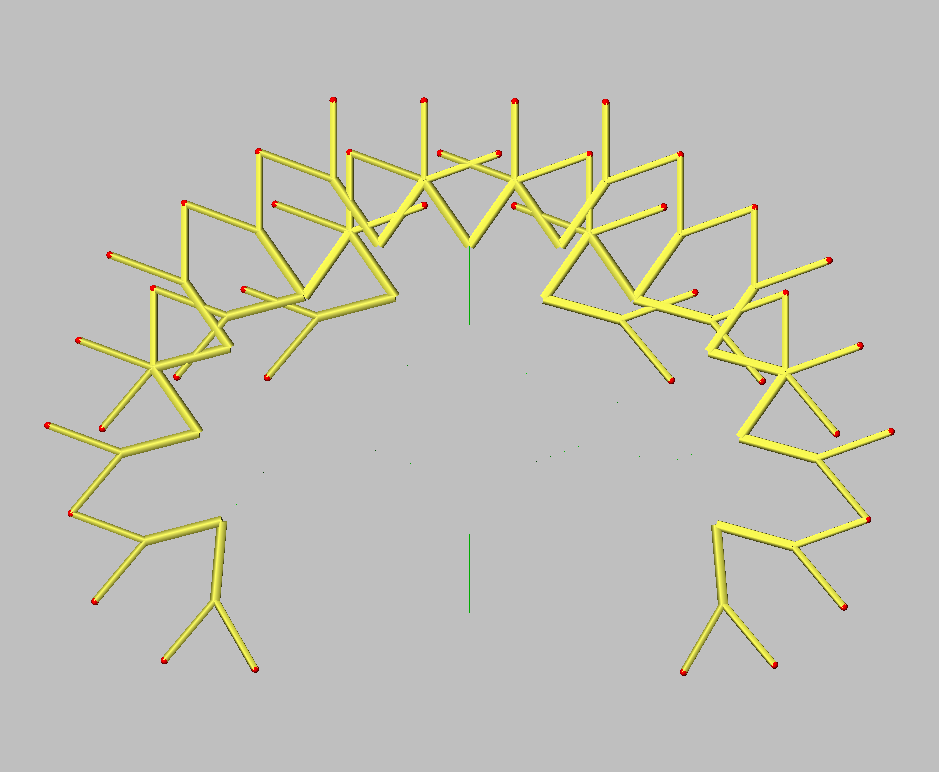Copy/Paste the following code to your GroIMP project:
//**********************************************************
/* You will learn:
– how the thickness grows according to the “pipe model”
– can be modeled more elegantly with the relation
“minDescendants”.
-minDescendants-> yields in the graph the next successor
having the subsequently specified node type and skips
nodes of other types.
– Successor and branch edges are taken into account.
– Growth in length and growth in thickness are again separated.
– It is no longer necessary to use the sequential mode of
rule application, thanks to the -minDescendants-> relation.
*/
module B extends Sphere(0.4)
{{ setShader(GREEN);}};
module C extends Sphere(0.5)
{{ setShader(RED);}};
module S(super.diameter) extends F(10, diameter, 2);
module T(super.diameter) extends F(10, diameter, 14);
// marked shoot: supposed to propagate its diameter downwards
float D0 = 0.001; // initial shoot diameter (nearly 0)
float D1 = 1.0; // final diameter of distal shoots
protected void init()
[ Axiom ==> S(D0) B; ]
public void grow_l() // length growth of the structure
[
B ==> [ RU(35) S(D0) B ] [ RU(-35) S(D0) B ];
]
public void grow_d()
[
S(d) B ==> T(D1) C; // marking of distal shoots
s:S(d), (empty((* S(y) -ancestor-> s *))) ==> t:T(0),
{
float dd = 0.0;
for ((* s -minDescendants-> T(y) *)) // searches marked
// successors
dd = Math.sqrt(dd*dd + y*y); // pipe model!
t[diameter] = Math.max(t[diameter], dd); // no shrinking
};
]
//**********************************************************




